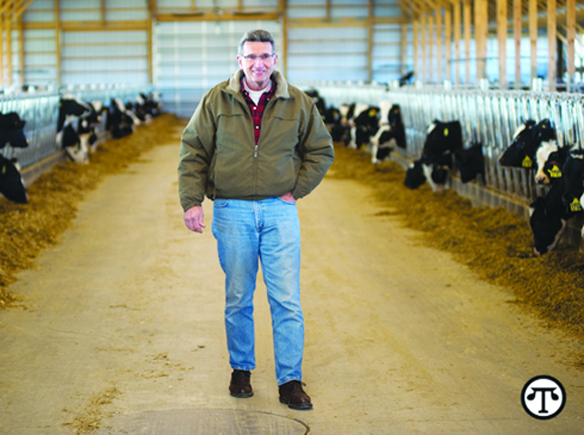(NAPS)—One of the nation's newest sources of electricity comes from…animal waste? It sounds futuristic, but it’s a reality for farmers like Luke, Mike and Tony Brubaker, who run a herd of 975 dairy cows and 800 young stock. Back in 2009, milk prices were down, so the Brubakers looked into other profit-making opportunities. They soon began converting cow manure, via an on-farm digester machine, into enough electricity to power 150-200 homes. But they didn't stop there—solar panels were added atop their heifer barn and broiler house to create additional thousands of kilowatts of electricity every month.
Around the country, farmers are harnessing alternative energy sources, including wind, sun, water and energy crops, in addition to providing resources for renewable energy through ethanol and biodiesel. These technologies not only benefit the environment, they also allow farmers to realize cost savings that can be passed down to customers.
Every five years, USDA’s National Agricultural Statistics Service (NASS) conducts the Census of Agriculture to paint the most accurate picture of farming today. Data from the latest census, released in 2014, reveal that farmers are on the leading edge of adopting renewable energy technology.
The USDA administers programs to help farmers participate in renewable energy production, which is how Brubaker began. The Agriculture Act of 2014 offers local grants for farmers and rural businesses to develop and improve renewable energy sources. And the latest Census of Agriculture shows that farmers are indeed harnessing the power of renewable energy—more than 57,000 U.S. farms reported producing renewable energy on their farm in 2012. This is more than double the number reported in 2007.
If you’ve taken a road trip lately, you’ve likely spotted wind turbines peppering the rural landscape. More than 9,000 U.S. farms house wind turbines, according to the latest Census of Agriculture, in addition to more than 36,000 farms with solar panels.
Farmers like Brubaker provide food for a rapidly growing population while working toward continuous improvements—not an easy feat, but a necessary one. It’s also one that Brubaker shares with consumers by hosting tours of his facility and making frequent presentations to students and foreign farm groups.
“We’re passionate about sustainability and are always looking at how we can better use the resources on the farm,” Brubaker says. “Growing a crop, feeding it to the animals, making it into milk or food then converting that animal byproduct into energy to power the operation is a complete cycle.”



















